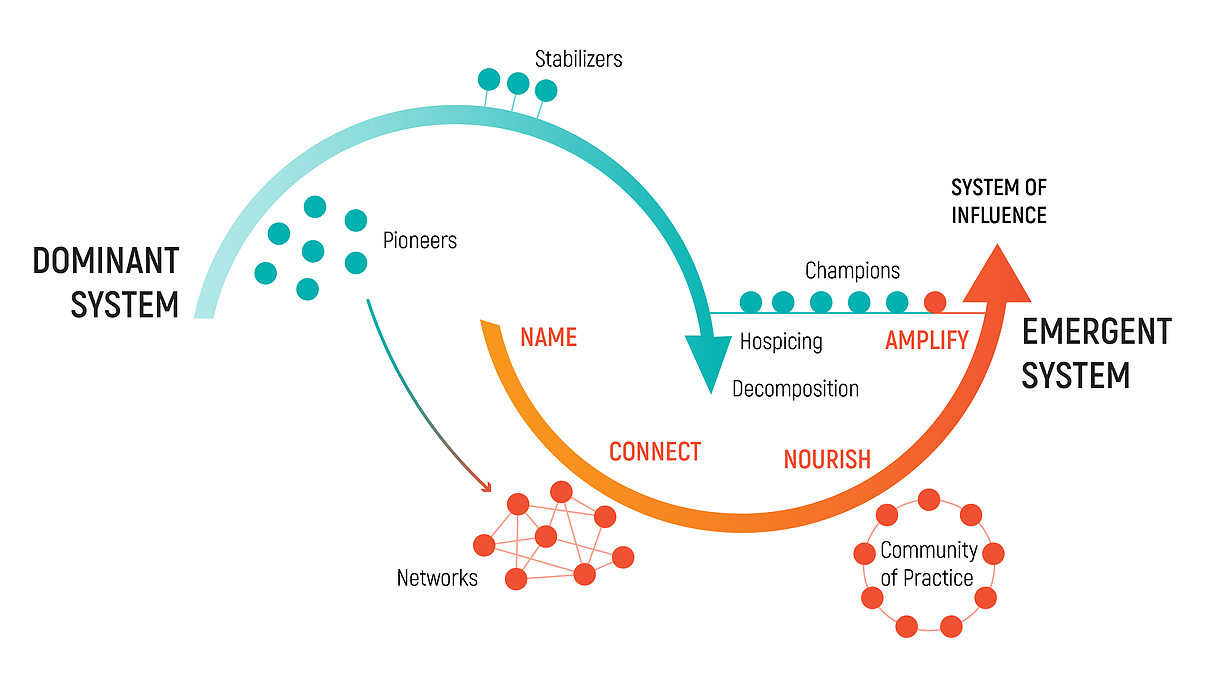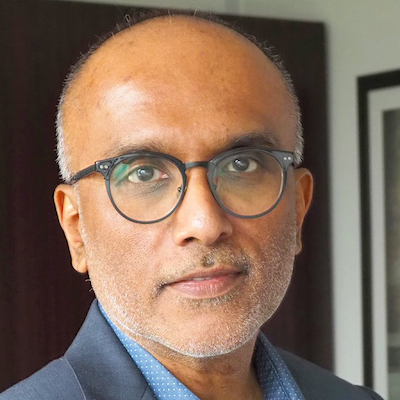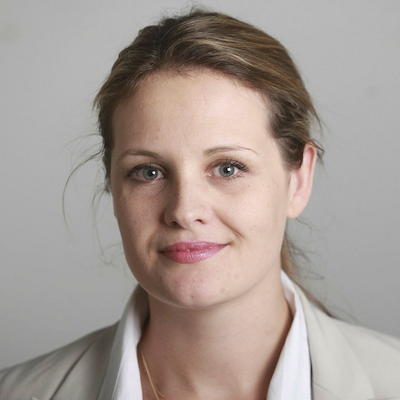The great transition
Do you enjoy a juicy diagram to situate yourself in a complex context? If yes, you’re in luck.
The brilliant writers and systems thinkers Margaret Wheatley and Deborah Frieze have generated the “Two Loops” model, which describes how complex organizations and all living systems follow a predictable, albeit non-linear, pattern of change.

I keep coming back to this image as my home base to grapple with WTF is happening in journalism, other institutions that form the pillars of democracy, and well, pretty much everything in life.
The Dominant System. Most journalism outlets are part of this top loop — the dominant system. And most are in some state of downward decay. We see hospice, death, and decomposition taking the form of layoffs, consolidation, mergers, hedge-fund takeovers, and the inevitable complete shuttering of news outlets. The gravitational pull toward the grave remains rather ferocious.
The Emergent System. But what’s exciting is that there are many seeds being sown, watered, and tended to in the bottom loop — the emergent system.
Here are some of the themes I’m noticing:
- Decentralization and getting beyond the “for-profit vs. nonprofit” conundrum: Think DAOs, blockchain, and journalism startups built upon collective ownership like Bloc by Block News. There are study groups forming around media cooperatives and more realization that for journalism to truly transform, you need to adjust the controls all the way up to the level of business models, ownership, and governance. An exciting policy effort is the Capital for Cooperatives Act that Colorado Sen. John Hickenlooper introduced to Congress in May (learn more about that here). And on the other end, when a media company “exits,” people are studying and experimenting with what a decentralized “exit to community” would look like as an alternative to IPO or acquisition.
- Policy innovation: Additional shining examples include the $1.67 billion dollar aid for local news organizations nested in the Build Back Better plan and the work that the Community Info Coop is doing to create policy for a local tax to support local journalism through the creation of Info Districts. Since dissatisfaction with the status quo has gone from a mumble to a roar, there is a rare opening for bold ideas to change policy and incentives around how quality, fact-checked journalism is funded, taxed, and included as an essential contributor to public health.
- Journalism as mutual aid: Bright lights like City Bureau’s Darryl Holliday have shared insights about how mutual aid and solidarity networks have not only grown due to economic disparity and the pandemic, but also how grassroots groups on the ground are starting to form their own information hubs — their own journalism by and for them. Media entrepreneur Maritza L. Félix recognized the need for mutual aid around combating election misinformation for Spanish-speaking families in Arizona and Mexico, and started Conecta Arizona as an answer. It’s growing at a rapid clip, and all started in a WhatsApp group. (FWIW, technologies like Hearken’s Community Management System are designed to support mutual aid, though we’ve found that most newsrooms aren’t yet ready to consider launching a mutual aid network.)
So hw do newsrooms on the downward slope of the dominant system — those that aren’t yet hip to or able to adopt the business models, qualities and platforms of the emergent systems — transition and evade the compost bin? Here are three practical recommendations.
- Engagement and engaging as the next revenue model for newsrooms. KPCC’s CCO Kristen Muller has been pursuing this logic and proving it right for years, and has now started a new program alongside three other public media newsrooms to operationalize engagement into revenue. This doesn’t just mean “doing engagement” — it means investing in people who are skilled at engaging. It’s about people building relationships, and using tools to support their workflows. If the future is one in which decentralization is key, more newsrooms are realizing that they need to decentralize their assignment desk (so to speak) and invite participation. In doing so, newsrooms can transition the editorial staff from being on the loss side of the P&L into direct revenue generators, as their call-outs and responses to engagement generate first-party data that translates into qualified leads for membership and subscriptions. But of course, if people don’t trust your news outlet to begin with, they’re not going to bother to engage with its content or with the people who represent it. Which is where the next recommendation comes in.
- Harm reduction practices. How might journalists and news outlets become less harmful to the communities they haven’t served well, or who they outright damaged through narrative violence and disinvestment? Many journalists are asking themselves this question and coming up with answers that will hopefully soon become industry standard. From diversity source trackers (see API’s version here, and NPR’s here) to overhauling crime coverage to trauma-informed reporting and less extractive reporting practices, there are many ways newsrooms can evolve their reporting paradigms and practices to generate more equitable coverage and more trust.
- Identify and invest in the champions. In the two loops diagram, you may have noticed the tightrope of a line that bridges the dominant system to the emergent system. On that line are a series of dots that represent actual people — the champions — who are doing the hard and often thankless work of being part of the dominant system and helping it to transition to the emergent system. These are the people in any given newsroom helping the organization to lay to rest practices that no longer serve its stakeholders, and experimenting with and amplifying the new ways of working that show promise. If you’re working in a dominant system newsroom, I urge you to take two minutes and think about who those people are in your organization. They are likely not just on the editorial side of the house, but may be working in events, marketing, revenue, subscriptions/membership, or elsewhere. How might you form a community of practice with those folks? It could be as simple as inviting them all to a virtual coffee, sharing this article or diagram, and supporting a discussion around what they see in the emergent system and where they’re finding opportunities or feeling stuck. To adapt a famous quote from Margaret Mead, Never doubt that a small group of thoughtful, committed newsroom staffers can change their organization from the inside out; indeed, it’s the only thing that ever has.
Getting back to the title of this prediction, “The Great Transition”: The word “great” can mean something that’s positive and out of the ordinary, or something that’s very large in size. I believe both interpretations of the word are true for the transition that’s in process for journalism. The chasm between dominant newsroom practices, ownership structures, and incentives, and that which is emergent, is indeed great. So are the pioneers who are either still working within the dominant system or have left it, and so are the adjacent practitioners who are coming in fresh to build the emergent one. In this case, the adage “what you pay attention to grows” serves as an invitation: which of these two loops, these two systems, are you investing your precious attention in growing?
P.S. While the people who know me in a journalism context likely know my work at Hearken — which endeavors to help the dominant system players transition to the emergent — since 2016 I’ve been working in parallel on the emergent system through cofounding Zebras Unite. I wager that this entity and collection of practitioners has the power to do more to transform journalism than Hearken can. We’ll see in a decade or so if that sub-prediction is right ;). Meantime, if you’re interested in the emergent, be sure to follow the work of/at: Nathan Schneider, MEDLab at Boulder, Mara Zepeda, and Exit 2 Community. For those entrepreneurs building the next journalism companies, join Zebras Unite’s free online community.
And if you’re curious about Margaret Wheatley, the brilliant thinker who co-created the Two Loops model and so much more, I had the chance to interview her in 2018. I’ll leave you with this quote from her to ponder.
It will take a lot of courage and fearlessness to make a choice about how you want to succeed in your profession. Do you want to have moral integrity? Do you want to stand up for the profession, and change it? You recognize where it’s at now is pretty abysmal. You have to decide if you’re going to be one of the people who is going to do your very best to change it.
Jennifer Brandel is cofounder and CEO of Hearken.

Do you enjoy a juicy diagram to situate yourself in a complex context? If yes, you’re in luck.
The brilliant writers and systems thinkers Margaret Wheatley and Deborah Frieze have generated the “Two Loops” model, which describes how complex organizations and all living systems follow a predictable, albeit non-linear, pattern of change.

I keep coming back to this image as my home base to grapple with WTF is happening in journalism, other institutions that form the pillars of democracy, and well, pretty much everything in life.
The Dominant System. Most journalism outlets are part of this top loop — the dominant system. And most are in some state of downward decay. We see hospice, death, and decomposition taking the form of layoffs, consolidation, mergers, hedge-fund takeovers, and the inevitable complete shuttering of news outlets. The gravitational pull toward the grave remains rather ferocious.
The Emergent System. But what’s exciting is that there are many seeds being sown, watered, and tended to in the bottom loop — the emergent system.
Here are some of the themes I’m noticing:
- Decentralization and getting beyond the “for-profit vs. nonprofit” conundrum: Think DAOs, blockchain, and journalism startups built upon collective ownership like Bloc by Block News. There are study groups forming around media cooperatives and more realization that for journalism to truly transform, you need to adjust the controls all the way up to the level of business models, ownership, and governance. An exciting policy effort is the Capital for Cooperatives Act that Colorado Sen. John Hickenlooper introduced to Congress in May (learn more about that here). And on the other end, when a media company “exits,” people are studying and experimenting with what a decentralized “exit to community” would look like as an alternative to IPO or acquisition.
- Policy innovation: Additional shining examples include the $1.67 billion dollar aid for local news organizations nested in the Build Back Better plan and the work that the Community Info Coop is doing to create policy for a local tax to support local journalism through the creation of Info Districts. Since dissatisfaction with the status quo has gone from a mumble to a roar, there is a rare opening for bold ideas to change policy and incentives around how quality, fact-checked journalism is funded, taxed, and included as an essential contributor to public health.
- Journalism as mutual aid: Bright lights like City Bureau’s Darryl Holliday have shared insights about how mutual aid and solidarity networks have not only grown due to economic disparity and the pandemic, but also how grassroots groups on the ground are starting to form their own information hubs — their own journalism by and for them. Media entrepreneur Maritza L. Félix recognized the need for mutual aid around combating election misinformation for Spanish-speaking families in Arizona and Mexico, and started Conecta Arizona as an answer. It’s growing at a rapid clip, and all started in a WhatsApp group. (FWIW, technologies like Hearken’s Community Management System are designed to support mutual aid, though we’ve found that most newsrooms aren’t yet ready to consider launching a mutual aid network.)
So hw do newsrooms on the downward slope of the dominant system — those that aren’t yet hip to or able to adopt the business models, qualities and platforms of the emergent systems — transition and evade the compost bin? Here are three practical recommendations.
- Engagement and engaging as the next revenue model for newsrooms. KPCC’s CCO Kristen Muller has been pursuing this logic and proving it right for years, and has now started a new program alongside three other public media newsrooms to operationalize engagement into revenue. This doesn’t just mean “doing engagement” — it means investing in people who are skilled at engaging. It’s about people building relationships, and using tools to support their workflows. If the future is one in which decentralization is key, more newsrooms are realizing that they need to decentralize their assignment desk (so to speak) and invite participation. In doing so, newsrooms can transition the editorial staff from being on the loss side of the P&L into direct revenue generators, as their call-outs and responses to engagement generate first-party data that translates into qualified leads for membership and subscriptions. But of course, if people don’t trust your news outlet to begin with, they’re not going to bother to engage with its content or with the people who represent it. Which is where the next recommendation comes in.
- Harm reduction practices. How might journalists and news outlets become less harmful to the communities they haven’t served well, or who they outright damaged through narrative violence and disinvestment? Many journalists are asking themselves this question and coming up with answers that will hopefully soon become industry standard. From diversity source trackers (see API’s version here, and NPR’s here) to overhauling crime coverage to trauma-informed reporting and less extractive reporting practices, there are many ways newsrooms can evolve their reporting paradigms and practices to generate more equitable coverage and more trust.
- Identify and invest in the champions. In the two loops diagram, you may have noticed the tightrope of a line that bridges the dominant system to the emergent system. On that line are a series of dots that represent actual people — the champions — who are doing the hard and often thankless work of being part of the dominant system and helping it to transition to the emergent system. These are the people in any given newsroom helping the organization to lay to rest practices that no longer serve its stakeholders, and experimenting with and amplifying the new ways of working that show promise. If you’re working in a dominant system newsroom, I urge you to take two minutes and think about who those people are in your organization. They are likely not just on the editorial side of the house, but may be working in events, marketing, revenue, subscriptions/membership, or elsewhere. How might you form a community of practice with those folks? It could be as simple as inviting them all to a virtual coffee, sharing this article or diagram, and supporting a discussion around what they see in the emergent system and where they’re finding opportunities or feeling stuck. To adapt a famous quote from Margaret Mead, Never doubt that a small group of thoughtful, committed newsroom staffers can change their organization from the inside out; indeed, it’s the only thing that ever has.
Getting back to the title of this prediction, “The Great Transition”: The word “great” can mean something that’s positive and out of the ordinary, or something that’s very large in size. I believe both interpretations of the word are true for the transition that’s in process for journalism. The chasm between dominant newsroom practices, ownership structures, and incentives, and that which is emergent, is indeed great. So are the pioneers who are either still working within the dominant system or have left it, and so are the adjacent practitioners who are coming in fresh to build the emergent one. In this case, the adage “what you pay attention to grows” serves as an invitation: which of these two loops, these two systems, are you investing your precious attention in growing?
P.S. While the people who know me in a journalism context likely know my work at Hearken — which endeavors to help the dominant system players transition to the emergent — since 2016 I’ve been working in parallel on the emergent system through cofounding Zebras Unite. I wager that this entity and collection of practitioners has the power to do more to transform journalism than Hearken can. We’ll see in a decade or so if that sub-prediction is right ;). Meantime, if you’re interested in the emergent, be sure to follow the work of/at: Nathan Schneider, MEDLab at Boulder, Mara Zepeda, and Exit 2 Community. For those entrepreneurs building the next journalism companies, join Zebras Unite’s free online community.
And if you’re curious about Margaret Wheatley, the brilliant thinker who co-created the Two Loops model and so much more, I had the chance to interview her in 2018. I’ll leave you with this quote from her to ponder.
It will take a lot of courage and fearlessness to make a choice about how you want to succeed in your profession. Do you want to have moral integrity? Do you want to stand up for the profession, and change it? You recognize where it’s at now is pretty abysmal. You have to decide if you’re going to be one of the people who is going to do your very best to change it.
Jennifer Brandel is cofounder and CEO of Hearken.
Michael W. Wagner

Candace Amos

Rachel Glickhouse

Juleyka Lantigua

Ariel Zirulnick

Joshua P. Darr

Millie Tran

AX Mina

Victor Pickard

Joy Mayer

Wilson Liévano

Andrew Freedman

Eric Nuzum

Gordon Crovitz

Gonzalo del Peon

Matt Karolian

Sarah Marshall

Robert Hernandez

Cherian George

Christina Shih

Julia Munslow

Christoph Mergerson

Mandy Jenkins

Stephen Fowler

Chase Davis

S. Mitra Kalita

Kristen Jeffers

Sarah Stonbely

David Cohn

Joe Amditis

Jesse Holcomb

Catalina Albeanu

Rasmus Kleis Nielsen

Kathleen Searles Rebekah Trumble

Jessica Clark

Burt Herman

Natalia Viana

Richard Tofel

Jesenia De Moya Correa

Matthew Pressman

Tony Baranowski

Julia Angwin

Cindy Royal

Jonas Kaiser

David Skok

Shalabh Upadhyay

Tamar Charney

Alice Antheaume

Kristen Muller

Ståle Grut

Moreno Cruz Osório

Anthony Nadler

Sam Guzik

A.J. Bauer

Shannon McGregor Carolyn Schmitt

Tom Trewinnard

Larry Ryckman

Whitney Phillips

Kerri Hoffman

John Davidow

Doris Truong

Simon Allison

Laxmi Parthasarathy

Brian Moritz

Anita Varma

Paul Cheung

j. Siguru Wahutu

Jennifer Brandel

Jennifer Coogan

Chicas Poderosas

Simon Galperin

Don Day

Joanne McNeil

James Green

Izabella Kaminska

Melody Kramer

Kendra Pierre-Louis

Daniel Eilemberg

Gabe Schneider

Mary Walter-Brown

Raney Aronson-Rath

Joni Deutsch

Amy Schmitz Weiss

Amara Aguilar

Anika Anand

Jody Brannon

Mike Rispoli

Errin Haines

Nikki Usher

Mario García

Janelle Salanga

Zizi Papacharissi

Stefanie Murray

Cristina Tardáguila

Parker Molloy

Megan McCarthy

Meena Thiruvengadam

Matt DeRienzo

Jim Friedlich

Francesco Zaffarano
